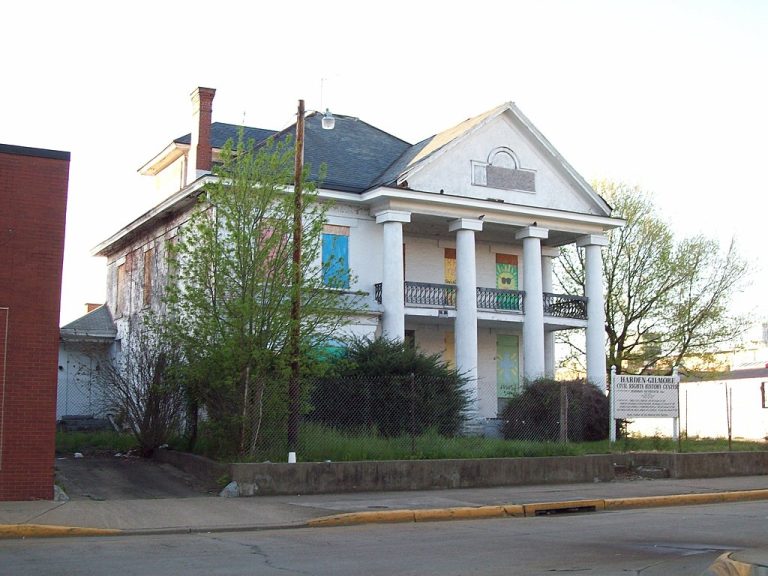From 1947 until her death in 1986, civil rights leader Elizabeth Harden Gilmore lived and worked in a two-and-a-half-story Classical Revival-style residence in Charleston. Gilmore co-founded Harden-Harden Funeral Home with her first husband and was the first African American woman licensed as a funeral director in West Virginia. She pioneered efforts and civil rights legislation to integrate her state’s schools, housing, and public accommodations. In the early 1950s, before the Brown v. Board of Education decision mandating school desegregation, Gilmore formed a women’s club, which opened Charleston’s first integrated daycare center. In 1958, Gilmore was among the first organizers of the Charleston chapter of the Congress of Racial Equality (CORE). With CORE, Gilmore participated in several boycotts and sit-ins challenging racial discrimination.
The home is a significant site for studying civil rights history and women’s contributions to social justice. As the home of Elizabeth Harden Gilmore, a pioneering civil rights leader, the house is a testament to her extensive work advocating for integration and civil rights legislation in the mid-20th century. Although the house is not currently open to the public for tours, its historical importance is recognized and listed on the National Register of Historic Places.
Field trips to the Elizabeth Harden Gilmore House can give students a unique opportunity to learn about the civil rights movement in West Virginia and the broader context of American history. Students can engage with themes of social justice, equality, and community activism through discussions of Gilmore’s work, including her efforts to establish the first integrated daycare center in Charleston and her leadership in local civil rights initiatives.
Educational programs related to the house could be designed to meet various curricular needs, focusing on social studies, history, and civics. For example, educators can incorporate lessons on the significance of the civil rights movement, the role of grassroots activism, and the historical context of segregation in America.





